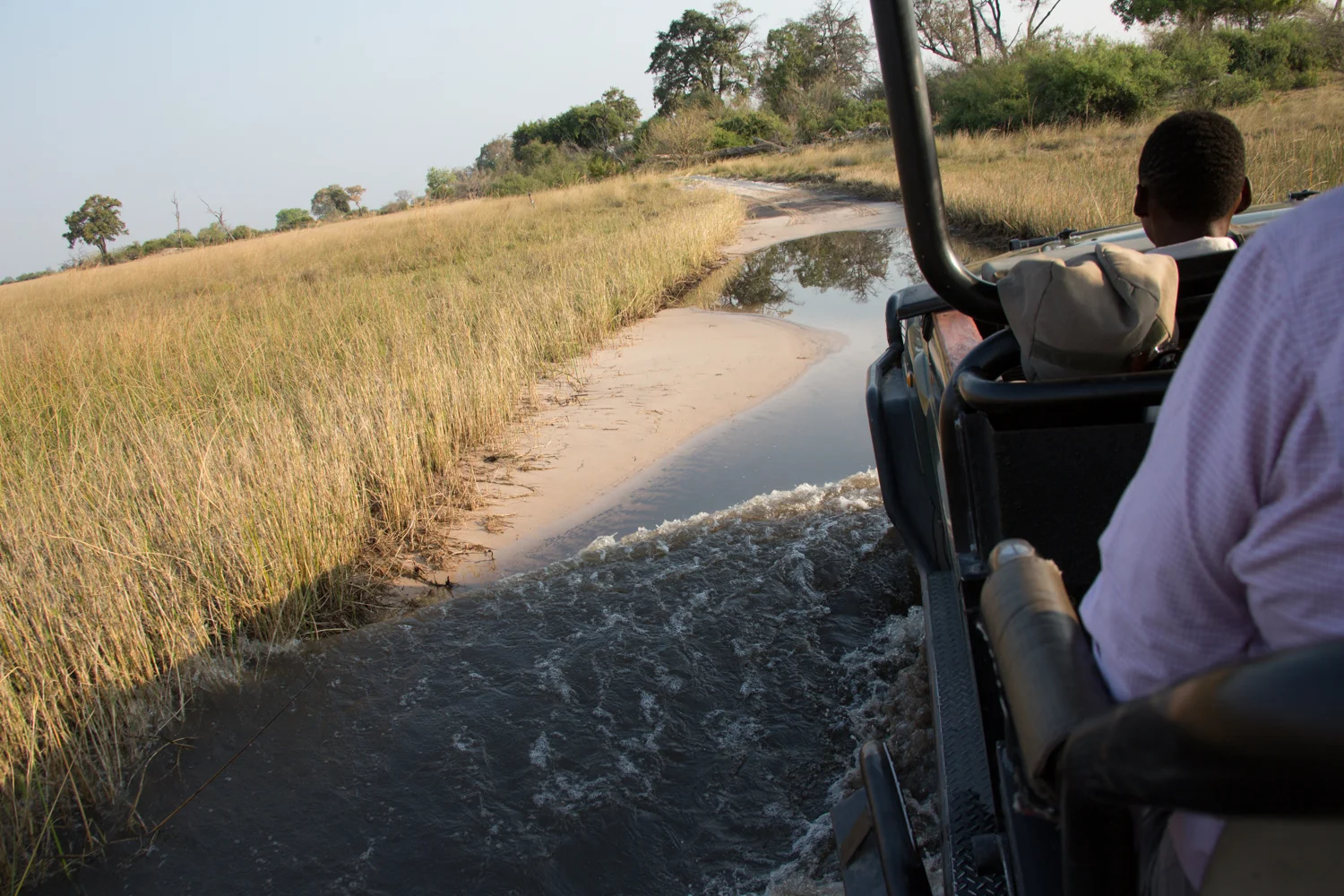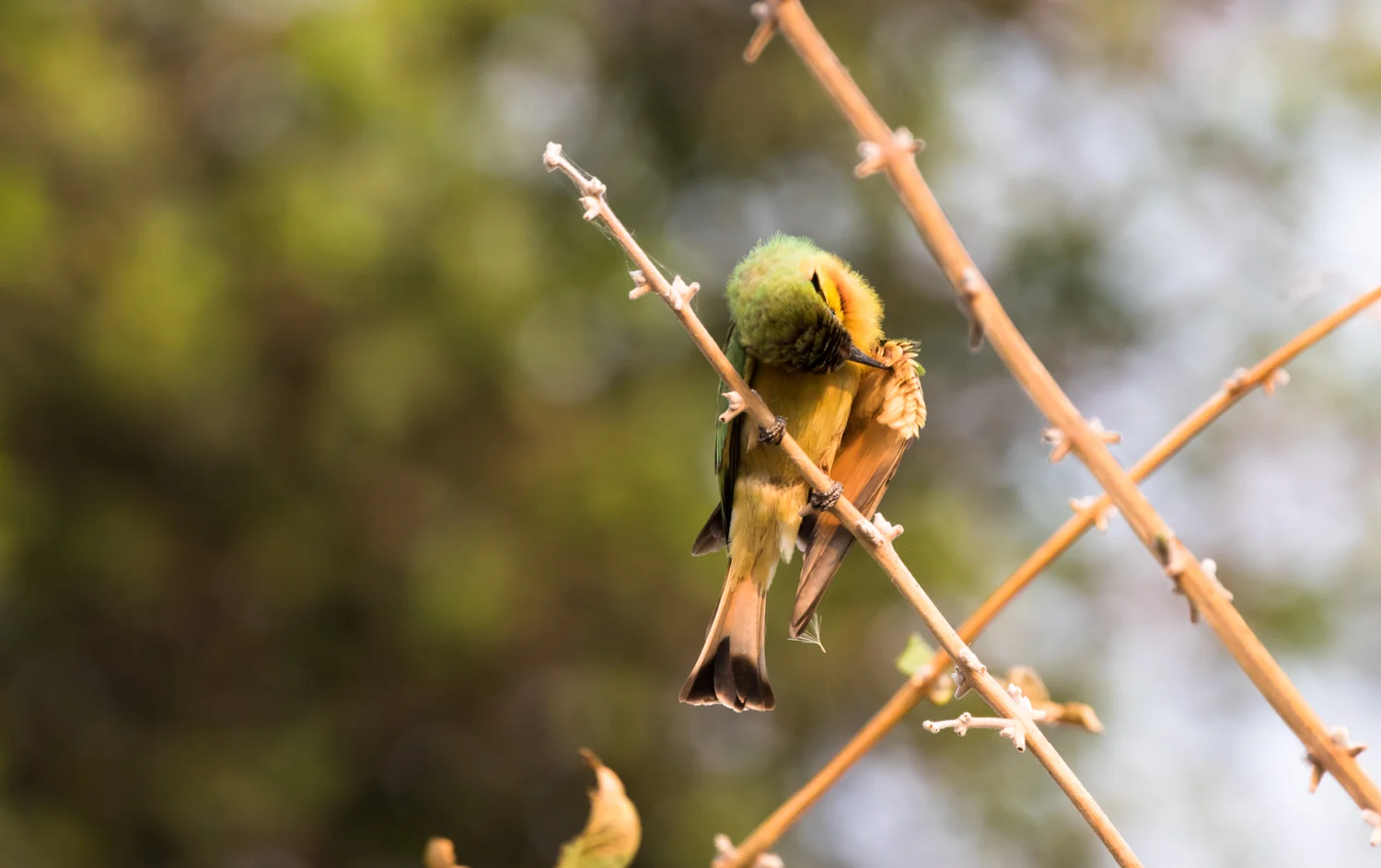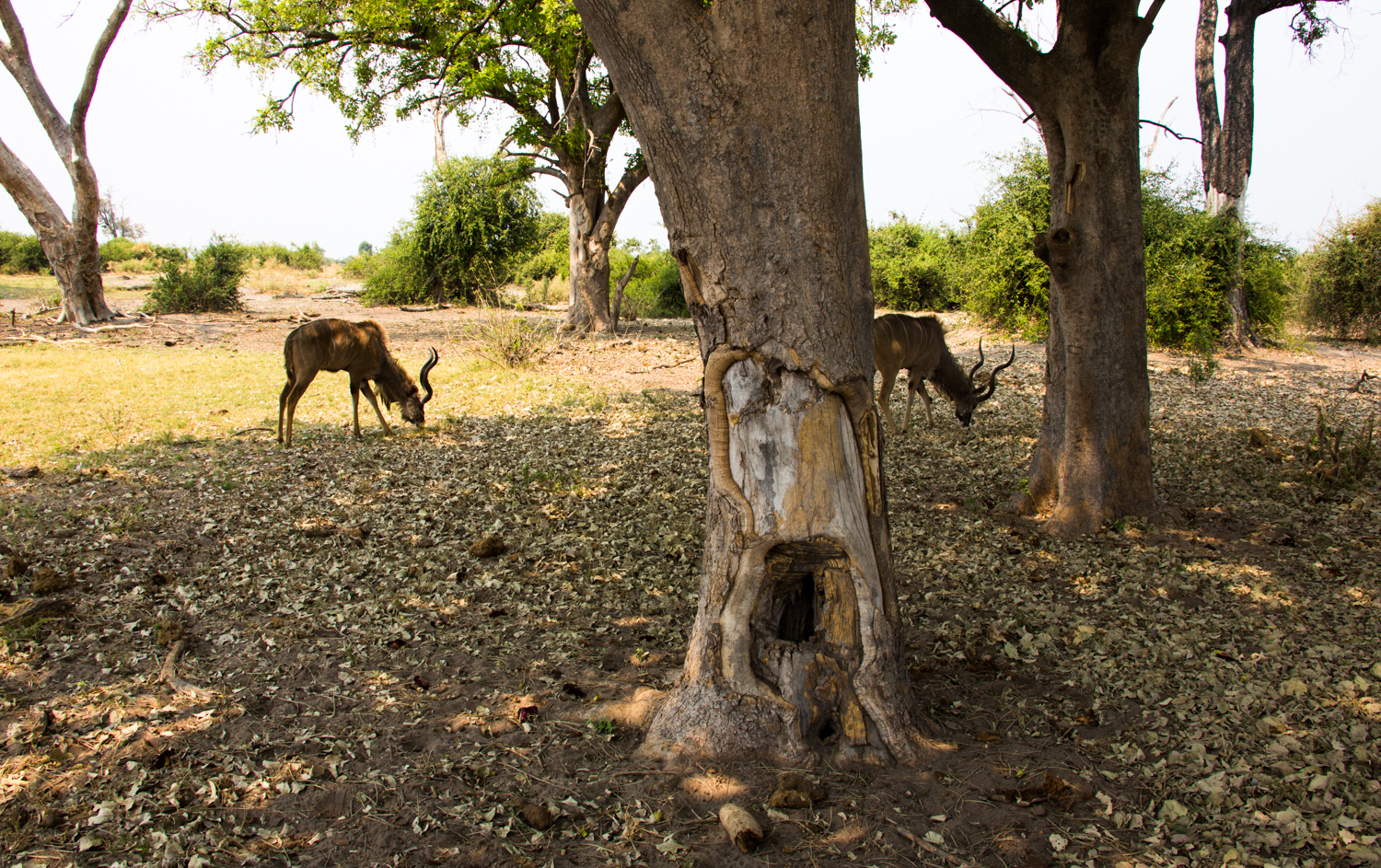Duba Plains, Botswana
August/September, 2015
Duba Plains Camp was established by a husband and wife photography and conservation couple some years back. This location was chosen as it was where they were doing their work to photograph and study a number of lion prides that inhabited this game rich area. Since then the organization has gone on to become major safari camp operators, and from we can see, is where most of their effort is now focused.
Unfortunately for us, we were sold on the fact that this was a lion pride rich area where we could go to see lion prides hunting big game on a regular basis. We were advised to book at least four nights at the camp to ensure we would be able to see a hunt. Well, it was all hype.
We discovered after arriving at the camp that there had been no lion prides in the area for some years, and the likelihood of seeing a large pride of lions hunting was pretty much nil. The entire compliment of lions in the area was a male and female with three cubs, and then another single male. A far cry from the five or six large prides we were told would be here to see.
Apparently the safari organizers don’t spend as much time inspecting camps and safari operators as they lead one to believe. Considering the cost per night at this camp, one would hope for more. Despite this, there was a decent supply of other game to view, and in particular, we would be treated to a breeding pair of leopards.
Guest Accommodation and Camp Facilities
Our private accommodation at Duba Plains was certainly on par with all that we had experienced to this point. Luxurious even by conventional perspectives, the fact that it was in the middle of the Botswana wilderness makes it just that much more impressive.
With only five guest tent/cabins, the feel in the camp was intimate with a lot of personal attentiveness from the staff. The one thing about Duba Plains Camp that stood out above and beyond all ten other safari camps we have stayed in over two years was the cuisine. This camp had a highly regarded chef, not just good cooks. And this really showed in the food that was placed on the table. It was truly exceptional.
Our Personal Accommodation While at Duba Plains
Common Areas at Duba Plains Camp
Game Drives And Getting Around In Difficult Terrain
From the very start we could see that our guide vehicle in this location was considerably different than the other trucks we have ridden in while on safari. That difference was its lift. The climb up into the truck, which was assisted by an additional fold down ladder mechanism, was much farther because trucks used here often had to deal with deep flood waters from the Okavango River. Without this increased height, guests would find themselves with soggy legs or worse. On several occasions we had water flow onto the floorboards inside the vehicle, and the area wasn’t even at full flood.
We had two individuals manning our guide vehicle. One was the actual guide employed by the camp. The other was a person from the local community. The area was on land that was under the protection of this local community, and this person was onboard to ensure that the guide practices matched the rules agreed to by the camp operator and the community. The fellow didn’t seem to have any real knowledge of anything, an we suspect is was more of an “employ a local” program. Either way, it helps to spread the wealth brought in by these safari camps over a larger population, and fosters a good relationship between the locals and the camp operator.
Raised four wheel drive or everglades air boat… which one would be better.
The Lions of Duba Plains… Such as they were
Making our way along the camp “driveway”, and out into the delta. The amount of work it took to make these bridges was incredible.
Fortunately there’s no rush hour in the Okavango Delta. Otherwise there could be one heck of a traffic jamb on the one way bridges.
Although the once plentiful lion prides of Duba Plains had been reduced to a single male and female with three cubs, it was these few lions that we first saw when we began the game drive in this area.
The female was guarding a recent kill of a female cape buffalo, and from looking at the size of her tummy, she had certainly enjoyed the meal.
Not far away, presumably after he had had his meal as well, was the male lion doing what male lions do best… lazing about. We didn’t see at this point the three cubs that we came across on a subsequent game drive. So we concluded that the adult lions left the cubs somewhere so they could hunt, and bring down the cape buffalo. It’s unlikely that the female could have done this on her own.
This engorged female was our first contact with lions in the Duba Plains area.
On the second day at Duba Plains we were introduced to the whole family in this “micro pride”. They were snoozing alongside a thicket on a small berm in the cool of the early morning. The three cubs went from snoozing to nursing to mischief… same as most species.
We also came back to this area in the late afternoon to find the cubs in a very playful mood, and getting snarled at by their rather grumpy father. Even the mother lion got snarled at by the male. Clearly he had a firm belief that he was the master and should not be disturbed by anyone.
Later on in our stay here at Duba Plains we managed to see the only other lion in the area, a male with a nasty injury to his rear left leg. He was a big gaunt, so was not getting as much to eat as he needed. Something that is not unusual for a lone lion that can’t hunt in a team.
An Alternative to Lion Prides
Although the poor showing of lion prides was disappointing, Duba Plains made up for it by providing a pair of mating leopards. Yes, we had seen a number of leopards in Chitabe, but they were all solitary animals. Here for the first time we were afforded the rare privilege of witnessing a mating pair of leopards that lasted the entire time we were in this area. And unlike many leopards that are relatively shy creatures, these two appeared to have no such quality when in our rather obvious presence.
In a similar fashion to that of lions, when leopards come together they mate multiple times per day over a number of days. Despite feeling like voyeurs, we followed this amorous couple for some time trying to get he best images we could. Unfortunately, leopards choice of when to mate isn’t dictated by whether their surroundings are particularly photogenic.
Like many different species, it is the female that determines when the time is right for a coupling, and they certainly let the male know when that time has come.
Duba Plains Birdlife
Bateleur Eagle
Duba Plains didn’t disappoint when it came to birdlife. From song birds to raptors to water birds, we saw a great selection. Even a few endangered species that are very rare to see.
Unfortunately the smoke in the area was harsh, and this in turn affected the quality of light for photography. Great shots were difficult because of this, but we did our best with some success.
One of the more unexpected bird types that we were surprised to see was a large owl. Although owls are found all over the planet, we just never thought about Africa as being a place where we would see them. Nevertheless, it was a real delight when we found this mother and her chick very late in the day when the light was almost gone. At first we thought it was just the adult alone, but after a short time a chick popped their head up and started moving around.
Throughout the rest of our stay at Duba Plains we saw a great selection of birds from tiny bee eaters to large herons. One particular bird, the African Darter, we came across as he was drying out his wings while sitting on the railing of the bridge. He wasn’t too happy when we came along as he had to jump off the bridge into the water when we came past him. He didn’t want to do it, and waited to the very last minute before making the plunge. We were hoping he just stay put, as we went by at a snails pace, not wanting to force him off the bridge. We felt really bad about it, but we were burning daylight and needed to get on with the game drive.
No Suitcases, But An Abundance of Trunks
Just like the other camps we stayed at in the Okavango Delta region, Duba Plains has a healthy compliment of elephants. Throughout our ramblings in this area, we saw different groupings of these large animals, and all of them had individuals in all the different age categories.
One group had an enormous male hanging around the extended family, and he was in musk. This elevated hormonal state of male breeding readiness was very evident by the wet stains running down the sides of his head, and also by his odor. At one point we were at least a half kilometre downwind from him and could clearly smell the “musky” sweet smell that was wafting into the wind.
This big boy spent his whole time wandering around and sniffing the backsides of the females to try and determine if they were ready for mating. None seemed receptive to his inquiries.
One of the families had an adorable and very young calf. Mamma was very attentive, and constantly checked to see how the tiny elephant was doing, encouraging it to stay close and keep up when they started to move on.
Other Animals Seen in Duba Plains
Although we spent a lot of time with the mating leopards, and trying to get decent shots of the lion cubs, we did see many other animal species.
From tiny black and red beetles to the very large elephants, we saw a great cross-section of fauna.
Duba Plains has rich grasslands at this time of year due to the flooding, and this attracts a large number of grazing animals. So we were treated to cape buffalo, hippo, reedbuck, red lechwe, elephant, greater kudu, warthog, tsessebe and more.
While munching on some nice green shrubbery, this cape buffalo got his cape cleaned by the red-billed ox pecker.


































































































































































































